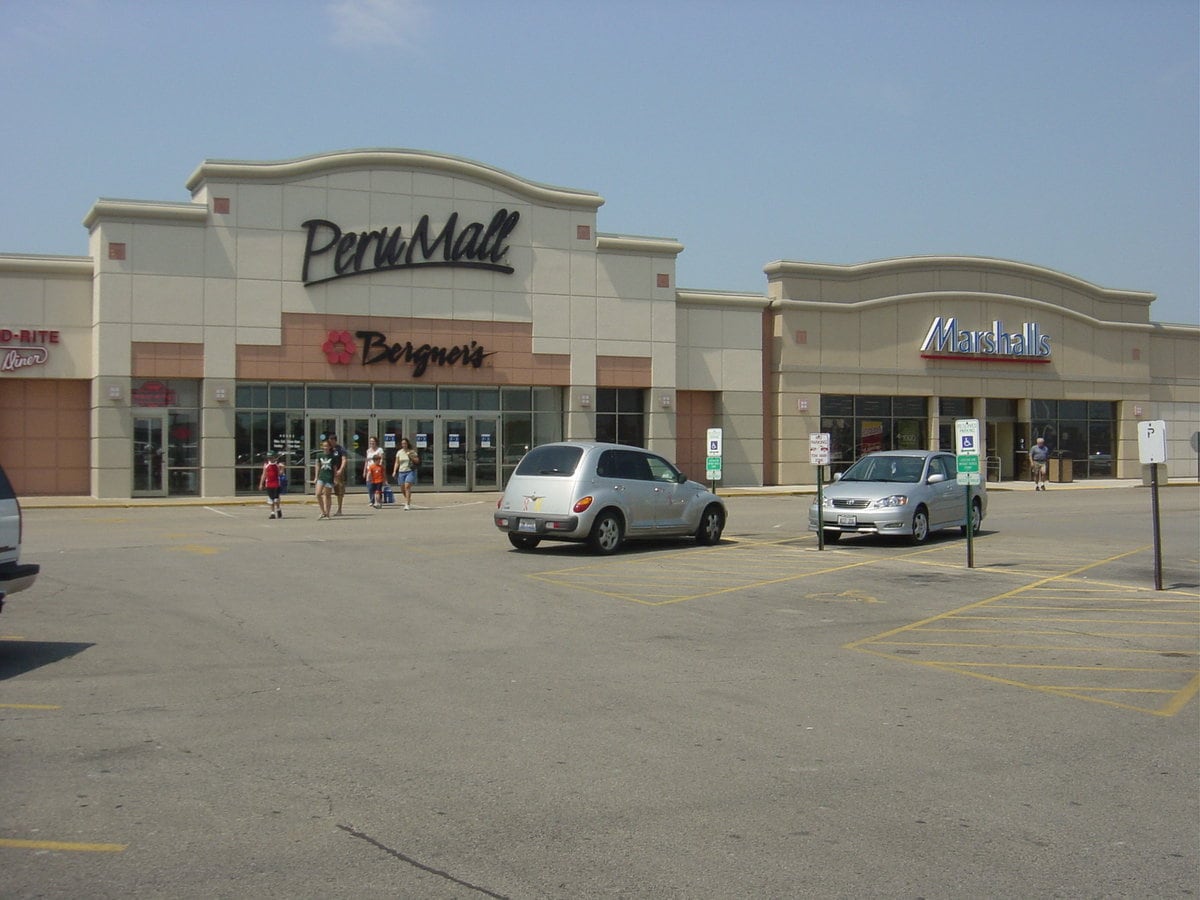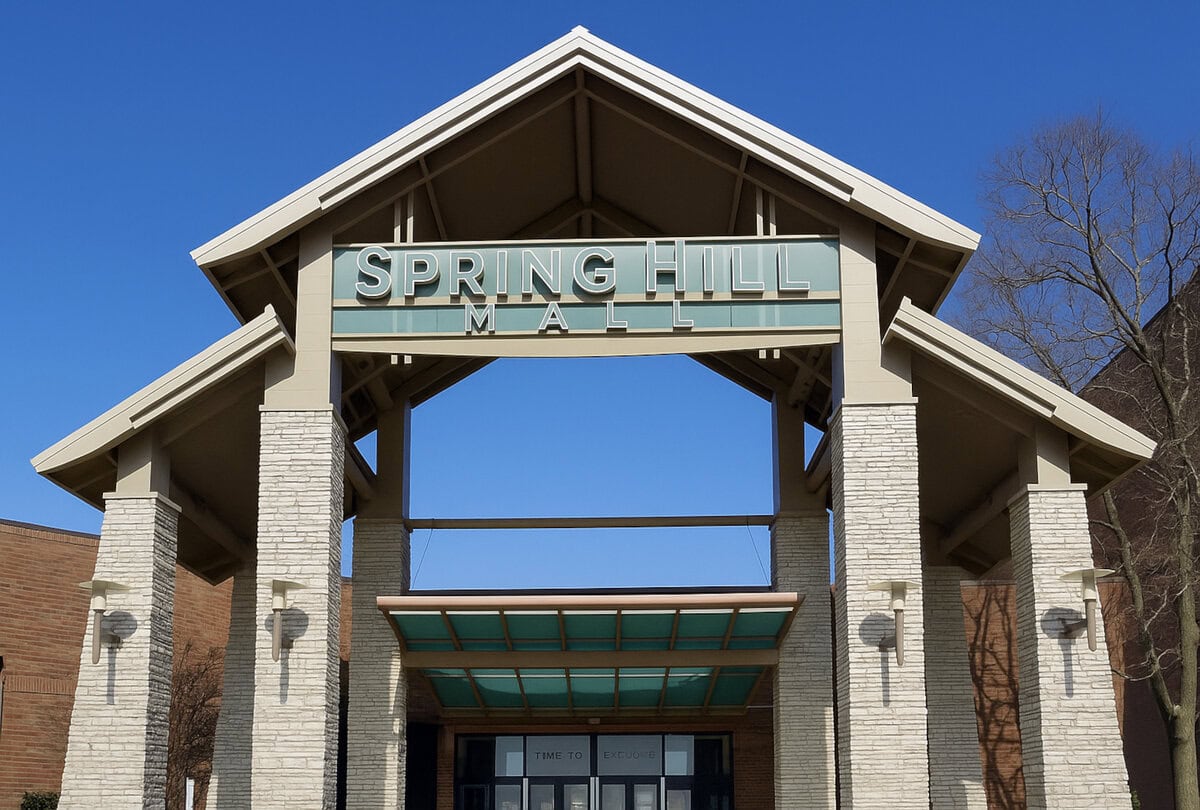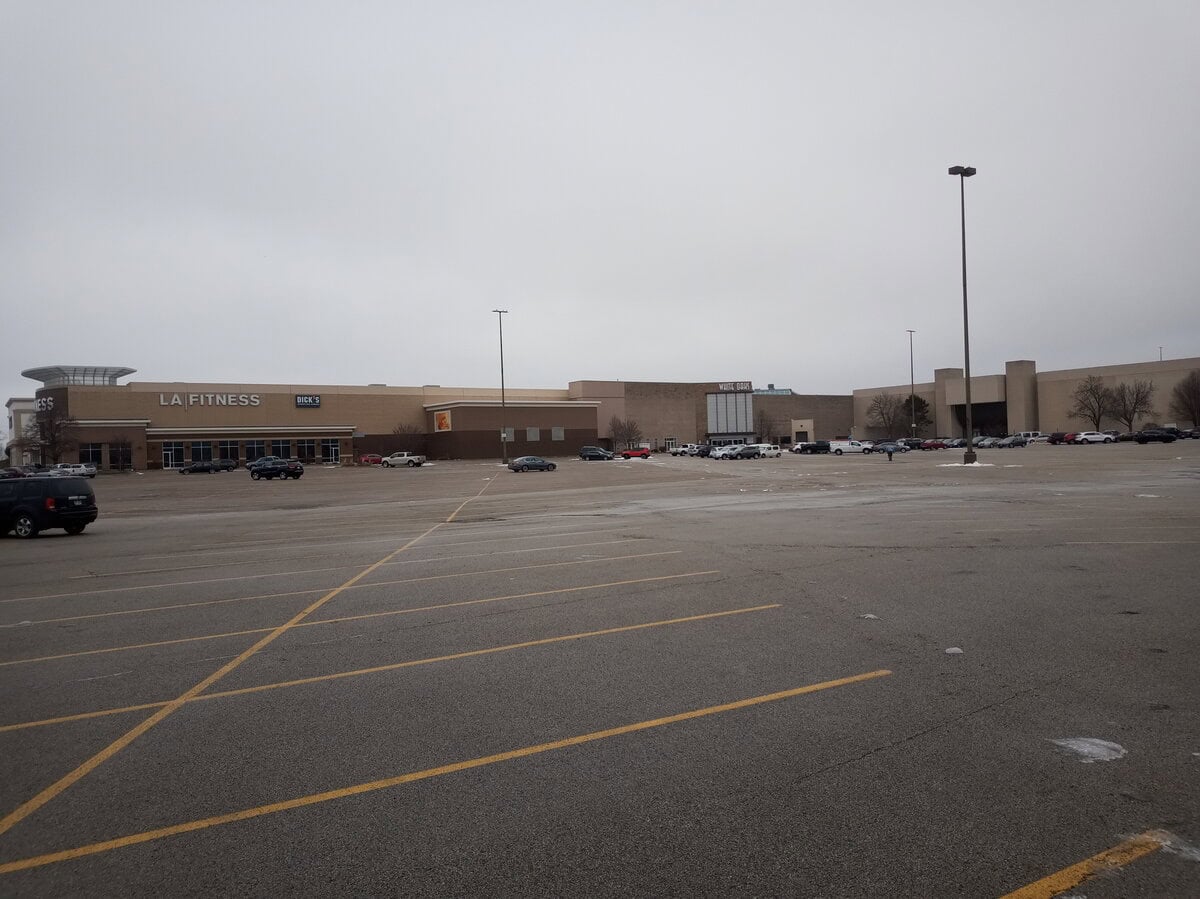Once There Was a Mall
Illinois Star Centre didn't start with a slow trickle of stores. It launched with intent. Sears, Dillard's, Target, and Phar-Mor were the magnets, and their arrival pulled people off Route 13 straight into the new mall in Marion, Illinois.
This was 1991, and while Carbondale's University Mall had already been around for more than a decade, the pitch in Marion was clearer parking, fresher leases, and sharper corners. The developer, Edward J. DeBartolo Corporation, gambled that Southern Illinois had room for two retail hubs.
When Sears left Carbondale and moved into the new mall, University Mall sued. That set the tone early. Legal tension, competitive turf lines, and public financing questions framed what some considered a retail land grab.
Buildout and Opening - The DeBartolo Launch Strategy
Backed by Edward J. DeBartolo Corporation, Illinois Centre Mall took shape quickly at 3000 W. DeYoung St., setting its sights on big-box anchors that could redraw retail maps.
By July 1991, Sears and Phar-Mor opened their doors. Dillard's followed that September. Target didn't wait long either, joining the lineup in October. That sequence mattered. These weren't just leases; they were shifts in market allegiance.
Inside the mall, more than 60 storefronts filled in around the anchors. Foot traffic surged. On paper, the formula worked. For those looking for things to do in Marion, Illinois, this new center wasn't just another entry. It defined the list.
Retail Turf War and Litigation Fallout
Illinois Centre Mall didn't quietly slot itself into Southern Illinois retail. It forced a reaction.
When Sears announced it would close its University Mall location in Carbondale and reopen inside the new Marion project, the move hit more than foot traffic projections.
It triggered a lawsuit. University Mall's developers challenged the state's financing mechanism that had backed the Sears relocation.
Their claim targeted how public dollars helped tilt the scales. But the courts didn't buy it. The case was tossed, and Illinois Centre kept Sears.
The litigation came early before the mall had even fully opened. That timing mattered. It revealed just how high the stakes were.
Two malls, less than 20 miles apart, chasing the same regional wallet. No middle ground. The contest between Marion and Carbondale had structure, lawyers, and a developer strategy behind it.
Phar-Mor, another anchor in the mix, didn't last long. It shuttered in 1993. That space shifted to a Blue Cross Blue Shield office and then again in 2004 to a radio-controlled car racing center.
That pattern - short-term use, followed by repurposing - became familiar later.
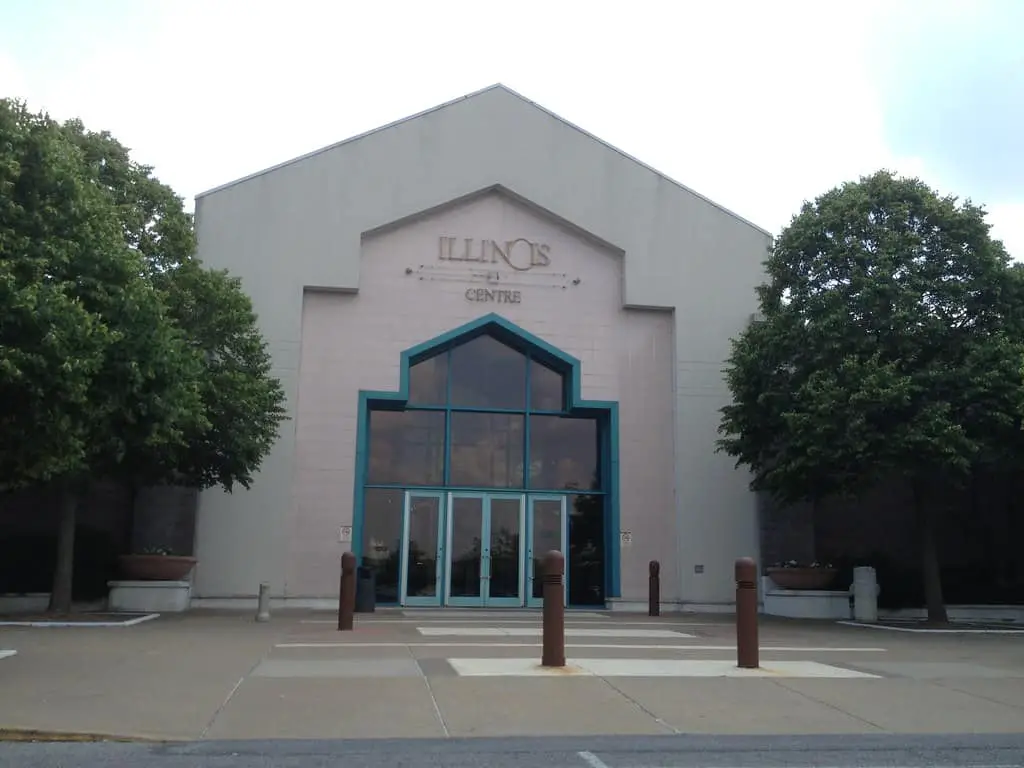
Adjacent Retail Expansion and Site Growth
While the mall anchored the original site, retail additions stacked up fast around it. Red Lobster was one of the first to be built, opening on July 6, 1992.
Not far behind came the Kerasotes eight-screen theater, which launched on December 1, 1993. That theater was eventually sold to AMC, which helped keep movie traffic in the vicinity even after the mall's interior slowed.
The buildout wasn't confined to dining and entertainment. In March 2002, O'Charley's opened on mall property, using space in the parking lot footprint.
Later that same year, The Home Depot opened west of Sears on November 6. Those additions weren't subtle shifts.
They were calculated placements that capitalized on Illinois Centre Mall's traffic without being locked into its walls.
September 20, 2006, brought another outside player: Walmart Supercenter. It opened just outside the mall footprint, east of Dillard's.
With Walmart in play, the site gained one of the few tenants that could anchor foot traffic without relying on the mall interior.
Title Transfers and Ownership Shakeups
Illinois Centre Mall didn't collapse overnight, but ownership churn gave the property a jagged path. DeBartolo exited in 1996, selling to local developers.
The handoff didn't spark a turnaround. By the early 2000s, mall traffic started thinning out. Occupancy briefly rose to about 60 percent around 2000, then slid again over the next decade.
In 2011, Sabre ISC stepped in, picking up the mall via delinquent tax certificate purchases.
The new name, Illinois Star Centre, came with new branding, but not much else changed operationally. Maintenance lagged. Leasing inquiries stalled. The mall's interior grew quieter.
Tenants closed up shop one after another.
Roc Enterprises, LLC, later took over the tax titles from the county trustee, but by then, the structure around ownership had splintered.
The same entity didn't own the anchor stores as the main mall. Even the parking lots had separate holders. That complexity made future redevelopment harder to coordinate and even harder to sell.
When the ownership team declared bankruptcy on May 4, 2017, it followed a failed auction attempt. No buyers stepped up. Retail space, utilities, and even tax bills became sticking points.
Multiple firms were tangled in overlapping property interests, each with different priorities and none with a plan that worked.

Tenant Closures and Bankruptcy Spiral
Southern Illinoisan reporting in March 2015 had already flagged trouble. Three individuals tied to the mall's ownership had been imprisoned.
Attempts to reach leasing contacts went nowhere. By that point, the mall's official management structure had stopped responding to routine inquiries.
Maintenance had already dropped off by then. Shuttered storefronts stayed dark. The food court, once part of the draw, had no active vendors left. Mall walkers, a familiar presence in earlier years, dwindled to none.
By early 2018, even anchor tenants were retreating. On January 4, Sears confirmed it would shut down as part of a national plan to close 103 stores. That location closed in April.
GameStop folded the same month. Joe's Records, one of the few remaining interior tenants, announced its exit on January 13 and vacated by January 31, shifting to Enterprise Way for better visibility.
On November 16, 2018, local news reported that Illinois Star Centre would cease operations completely within the next month.
Dillard's and Target, still operating as standalone anchors, were expected to remain open. Everything else inside the main concourse faced closure.
The announcement didn't come with the ceremony. There was no public farewell or campaign to save it. The doors closed anyway.
Real Estate Gridlock and Sales Failures
After 2018, Illinois Star Centre wasn't a shopping mall anymore. It was a large, mostly empty property with multiple owners, tax complications, and no buyers.
Commercial real estate brokers showed little interest in coordinating such a fractured set of holdings. No developer wanted to piece together parcels for a site with unclear future zoning. The interior was dark.
By 2021, the mall building was empty and locked. The anchor stores still used exterior lots, but nothing tied them back to the original retail footprint. Whatever came next would have to start from the outside in.
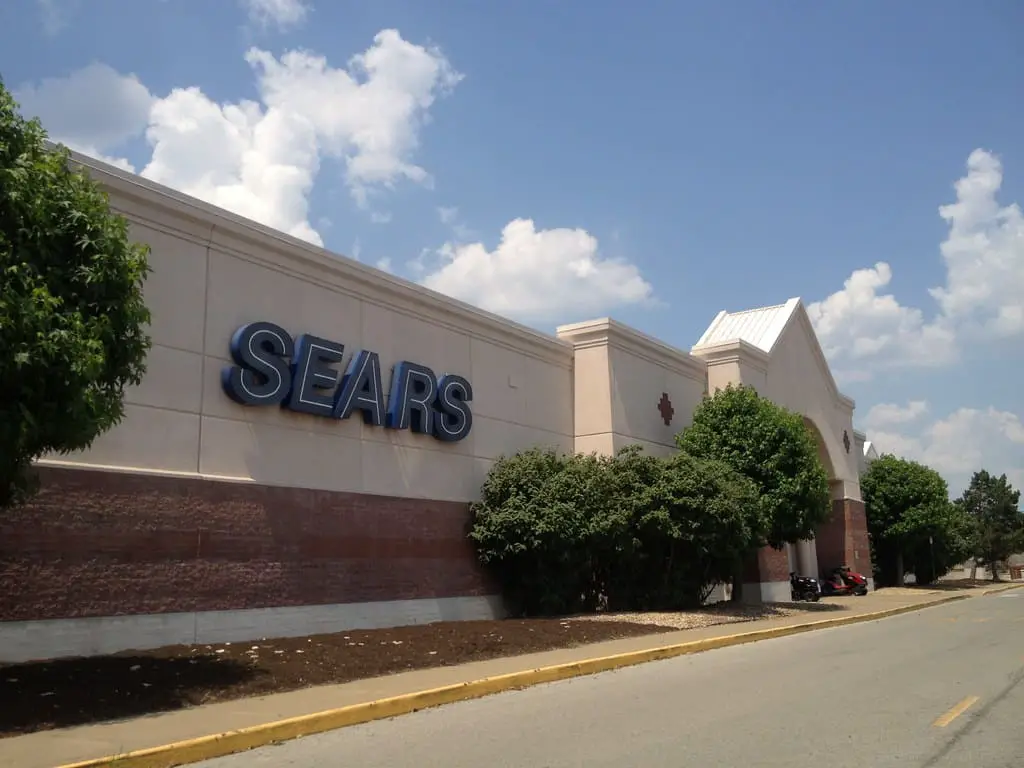
New Plans, Old Ground
By September 2023, what had circulated as a rumor turned official. Black Diamond developers stepped forward with a proposal to transform the long-vacant Illinois Star Centre property.
They secured state approval to designate the area as a STAR Bond District, allowing future sales tax revenue to help cover the cost of construction.
That opened the door for a full-scale redevelopment.
The plan, known as Oasis Outdoors, laid out more than a facelift. It included a sports complex, a golf simulator modeled after TopGolf, multiple baseball fields, and dedicated pickleball courts.
The focus wasn't retail this time. It was an activity-driven space designed to draw steady regional traffic.
Marion city officials signed off without dissent. The project passed with unanimous approval. Developers estimated the site could support over 500 new jobs once construction wrapped and operations launched.
STAR Bonds and Redevelopment Kickoff
In February 2025, Marion's city council voted to approve a $150 million STAR Bond package to redevelop the site. That made Illinois Star Centre the first STAR Bond project in Illinois history.
The developer, Oasis Outdoors LLC, proposed a 550,000-square-foot complex with retail, dining, sports, and entertainment.
Plans included an indoor fieldhouse, bowling, go-karts, a putt-putt course, driving range simulators, pickleball courts, and a laser tag arena.
The bonds were officially sold by mid-March 2025. That cleared the way for construction to begin. On May 15, the governor and state and local officials attended the ceremonial groundbreaking.
The project, according to public statements, would bring construction jobs in the short term and new tax revenue once completed. Officials gave a target completion date of summer 2026.
The legal structure for STAR Bonds in Illinois had been created under the Innovation Development and Economy Act. Marion's success with this first project started new discussions in Springfield about whether other municipalities might follow.
The old mall's shell was still standing, but that would likely change within months. New foundation lines had already been staked.
🍀




